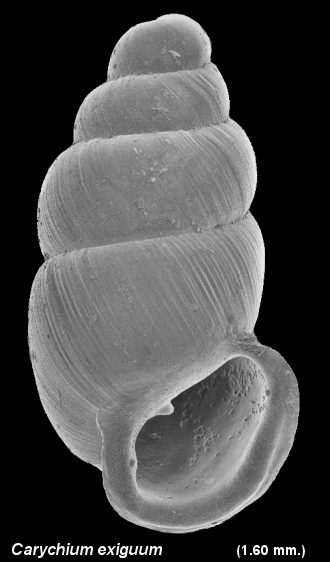Adaptation
Carychium has a foot for movement and attachment that is transversely divided beneath to be able to move in a damp muddy environment under leaves or rotten wood or even on rocks. The peristome is expanded with one internal tooth and a slightly arched jaw for eating. The jaw is covered with a thick cuticle to facilitate the cutting or ripping of leaves and other parts of the diet of the Obese Thorn (Binney & Bland 1869). As mentioned in the classification page, the Obese Thorn is part of the Pulmonata sub class and has the organ called a radula. This is a rasping tongue-like organ that has small chitinous teeth. Complex muscles move the radula and in combination with the teeth can scrape, pierce, or tear particles of food. This helps the Obese Thorn eat the decaying leaves, wood, or other plants because it is an herbivorous snail. The internal structure of most mollusks have gas exchange across the body surface, usually the mantle, and in a pulmonate the lung also functions in has exchange. The circulatory system of the Pulmonates includes an open circulatory system with a pumping heart that includes two chambers, blood vessels, and blood sinuses. The transport fluid for the circulatory system is composed of hemolymph which includes intestinal fluid and blood. The sinuses are used to send blood through the tissues of the pulmonate (Hickman 2009).Check out the next page to learn about the nutrition of the Obese Thorn.
Image of Carychium exiguum shell taken by scanning electron micrograph.
